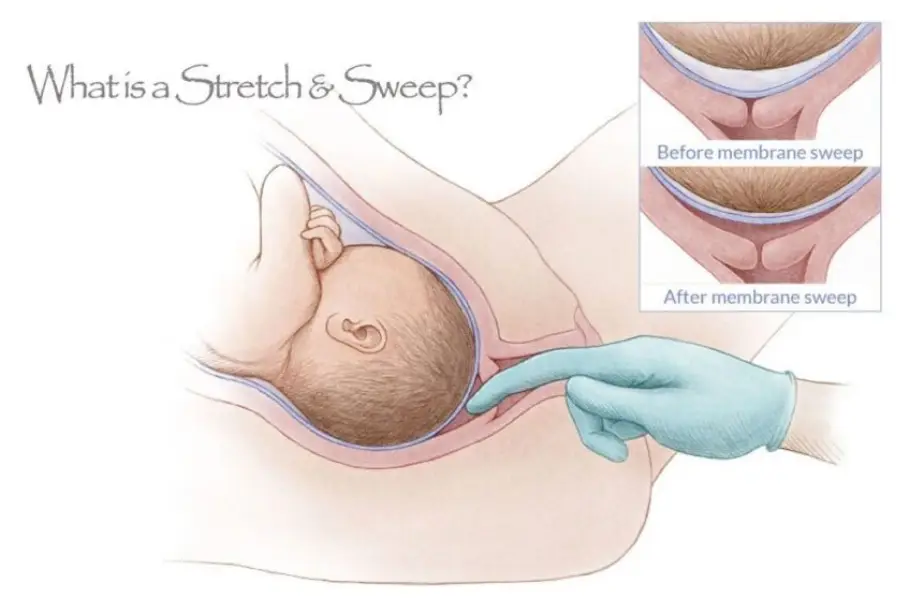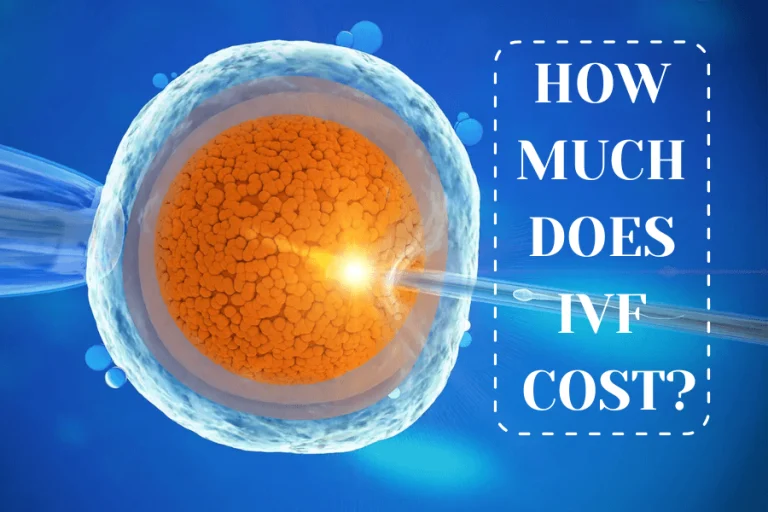
Labour will begin in trimester from 38 to 42 weeks. In this period, mothers may hear some terms for the first time such as: cervical sweep, membrane sweep, membrane stripping or stretch and sweep. They may offer a membrane sweep or more to go into labour. Therefore, we will discover what membrane sweep is and some benefits as well as its negative in this article.
What is Membrane Sweep?

A membrane sweep (also called membrane stripping, stripping of the membranes and cervical sweep) is similar to an internal exam. When implementing a stretch and sweep, the healthcare provider puts a gloved finger into your vagina and sweeps the cervix. This action will separate the amniotic sac from the wall of the uterus and lead to release of prostaglandins to help ripen your cervix and get contractions going.
Membrane sweep will usually happen when mothers are near or over their due date. Although cervical sweep is safe and common, it is unsure to jumpstart labour or contractions. This operation is only carried out if the cervix has started to dilate. And this method is considered as the first selection to begin natural labour before using other labour induction.
When Will We Need Membrane Sweeping?
Obstetricians may recommend cervical sweep if your due date is near or over. Children born at 9 months, which corresponds to about 39 to 41 weeks, will have a low risk of complications. Therefore, if the due date is more than 41 or 42 weeks, it puts mothers and babies at risk of fatal problems1.
And membrane stripping will be used in another case such as: the contractions have not happened; however, the cervix is already opened partially. Membrane sweeps are not performed on mothers who are not doing well and should have a C-section.
Process Of Membrane Sweeping
A membrane sweep is not sure to induce labor. This is the natural way to kick start labour and decline medical or surgical induction. Membrane sweeps could be effective in case:
- The cervix are already soft, thin and dilated
- In 39 – 40 pregnancy week or more
- In the early stage of labour
During Membrane Sweep
A membrane sweep is one of the natural labor induction methods. The doctor or midwife usually checks the membrane in prenatal appointments and usually sweeps it in 39 or 40 pregnancy weeks.
Firstly, pregnant women have to take off their clothes from their waist down. They will lie on their back on a gynaecological examination table like a pelvic exam. Pregnant care providers will cover a sheet over mother’s legs and put mother’s feet in stirrups.

Secondly, the doctor or midwife will check the mother’s cervix. If a woman’s cervix is hard and closed, a membrane stripping usually is unfavorable and even impossible. In this situation, the care provider probably massages the cervix instead.
In contrast, if the cervix is favourable (dialate at least 1 to 2 centimeters) dilated for a healthcare provider to perform a membrane sweep, the care provider will gently place their gloved finger into the vagina and sweep around the neck of the cervix in a circular motion. This action could take a few minutes to sweep the membranes and cause little pain. Some mothers feel it is like a tough pelvic exam.
This aim is to separate the membranes of the amniotic sac from the walls of the uterus without breaking the sac. And this action will activate your body to release prostaglandins.
During stripping of the membranes, the water may break (membrane ruptures). Mothers do not worry much because that is the reason why doctors only implement this procedure in full-term, healthy pregnancies with a negative Group B strep test.
After Membrane Sweep
After stripping the membrane, mothers will put on the clothes and go home. Moreover, mothers may undergo some side effects:
- Cramping
- Contractions that are uneven or difficult to track.
- Discomfort
- Slight bleeding or spotting at vagina.
If the vaginal bleeding becomes serious or suffers extreme pain, mothers should find doctors right away.
Pros And Cons Of Membrane Sweep
Generally, membrane sweep is a safe approach when mothers hit 39 to 40 weeks and the way to irritate naturally when mothers deliver post-term (41 or 42 weeks). However, it does not mean after membrane sweep, mothers will not experience complications compared with those who have C-section.
Benefits Of Membrane Sweep
The biggest benefit of membrane stripping is to help you to labour naturally, avoid medical or surgical induction and a relatively low-risk method. However, study shows there is no guarantee that pregnant women will go into labour after membrane sweep.
In addition, even if the membrane sweep fails, it probably still leads to labor coming sooner than without the membrane sweep. Sometimes, the slight stimulation that happens to the mother’s cervix during a membrane stripping is enough to make the mother’s body release prostaglandins and start labor in a few days.
Risks Of Membrane Sweep
Membrane sweep seems safe and does not cause any increase in maternal or fetal risks. However, mothers may experience slight pain or discomfort during sweeping and bleeding after. It also results in mistake cramping to contractions. Mothers have a right to refuse to get membrane sweeps2.
During sweeping, breaking of water can occur. From medical perspective, it is normal if mothers are full-term pregnancy; but some mothers do not already prepare mentality.
However, if mothers reach to 41 or 42 pregnancy weeks, maternal and fetal complications tend to increase3, they could suffer such as:
- Chorioamnionitis (amniotic fluid infection)
- Endomyometritis (uterine infection)
- Low Apgar scores
- Macrosomia (large fetal size)
- Meconium aspiration (when a fetus breathes in its first bowel movement in the womb)
- Neonatal acidaemia (when excess acid builds up in a baby’s blood)
- Neonatal death
- Postpartum hemorrhage
- Severe perineal injury
How Long Will Pregnant Women Labor After A Membrane Sweep?
After a membrane sweep, mothers ought to wear a sanitary pad and go home to wait for the labour to start. Most women will start labour within 48 hours. If labour does not happen within 48 hours, mothers will have a next appointment for an induction. To know when labour starts, mothers should notice signs of labour.
Some Words From Babies Parent
Membrane sweeps are one of an effective and safe method to kick start labor if mothers hit at least 39 weeks pregnant. While doing that, women will feel slightly painful or comfortable, but it is a good chance to go into labour naturally. If cramping or bleeding or both become heavy, mothers should contact your doctor immediately. Mothers should discuss what you want to have the best labour induction choice for you.
Sources
- Avdiyovski H, Haith-Cooper M, Scally A. Membrane sweeping at term to promote spontaneous labour and reduce the likelihood of a formal induction of labour for postmaturity: a systematic review and meta-analysis (https://pubmed.ncbi.nlm.nih.gov/30284490/). J Obstet Gynaecol. 2019;39(1):54-62. ↩︎
- Finucane EM, Murphy DJ, Biesty LM, Gyte GM, Cotter AM, Ryan EM, Boulvain M, Devane D. Membrane sweeping for induction of labour (https://pubmed.ncbi.nlm.nih.gov/32103497/). Membrane sweeping for induction of labour. Cochrane Database Syst Rev, 2020, February 272(2) ↩︎
- Finucane EM, Murphy DJ, Biesty LM, Gyte GM, Cotter AM, Ryan EM, Boulvain M, Devane D. Membrane sweeping for induction of labour (https://www.cochranelibrary.com/cdsr/doi/10.1002/14651858.CD000451.pub3/full ). Membrane sweeping for induction of labour. Cochrane Database Syst Rev, 2020, February 272(2) ↩︎






